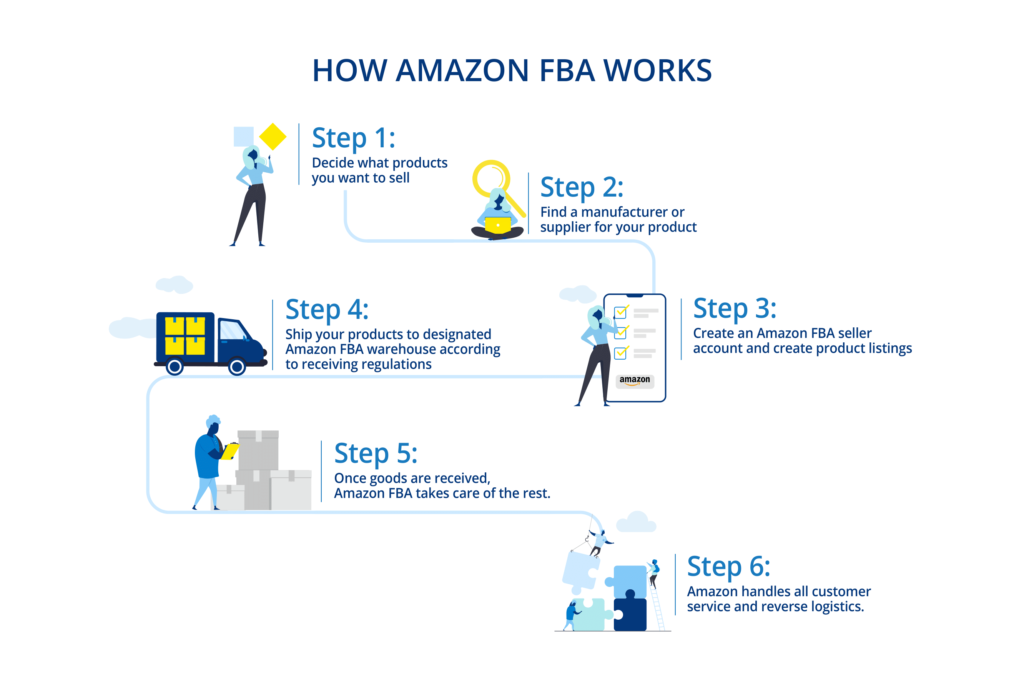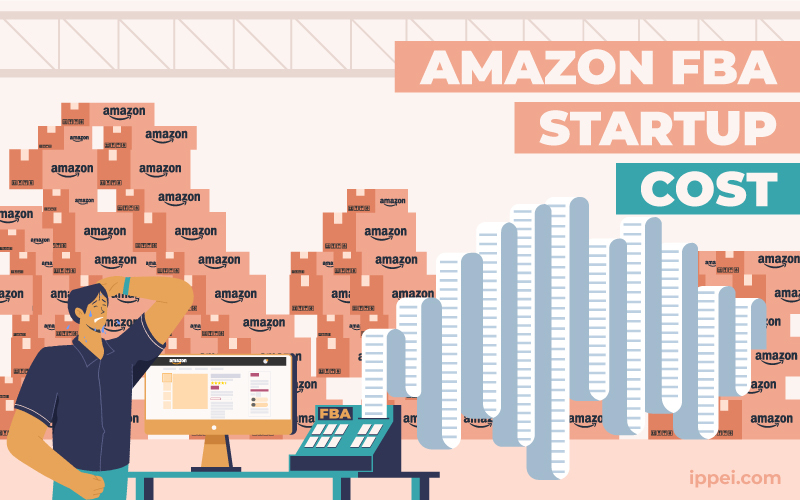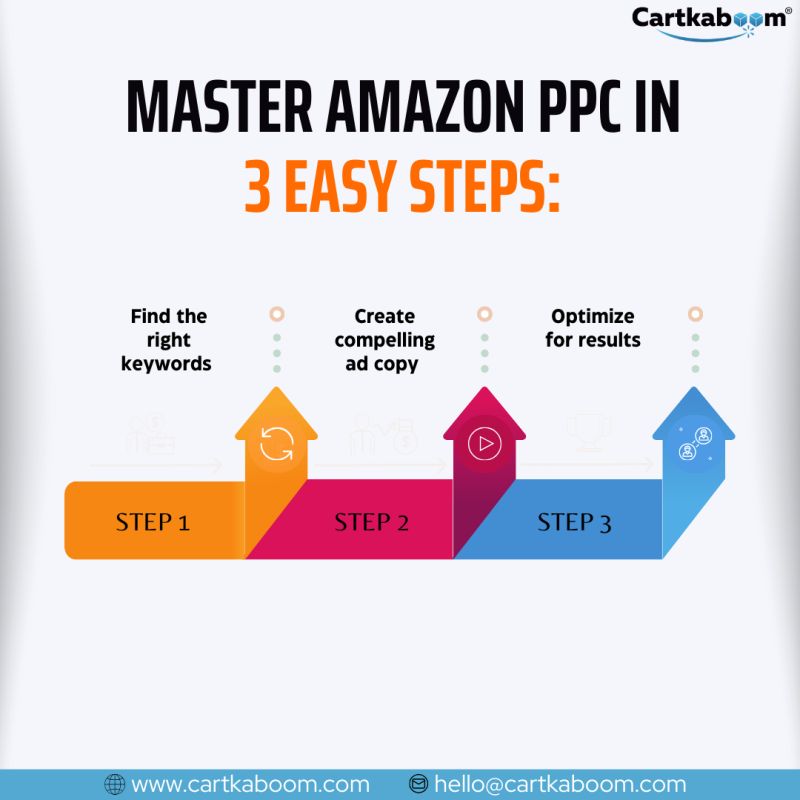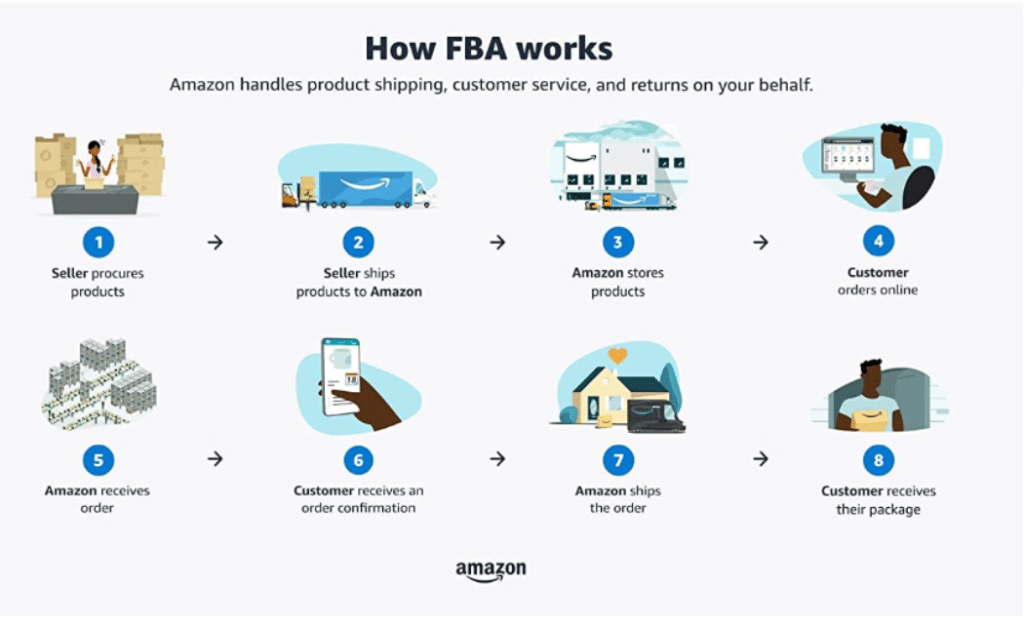Uncover the secrets to mastering Amazon FBA costs effortlessly and watch your profits soar to new heights in no time!
Table of Contents
- Introduction to Amazon FBA
- Understanding Amazon FBA Fees
- Calculating Costs with Amazon FBA Calculator
- Saving Money on Amazon FBA Fees
- Common Mistakes to Avoid
- Maximizing Profits with Amazon FBA
- Strategies for Long-Term Success
- Learning from Successful Amazon FBA Sellers
- Keep Up with Changes
- Conclusion
- Frequently Asked Questions (FAQs)
Introduction to Amazon FBA
Have you ever wondered how all those products on Amazon get shipped to your doorstep so quickly? Well, that’s where Amazon FBA comes in! In this section, we’ll dive into what Amazon FBA is all about and why it’s an essential tool for businesses looking to sell their products online.
What is Amazon FBA?
Amazon FBA stands for Fulfillment by Amazon, and it’s a service offered by the e-commerce giant that helps sellers store their products in Amazon’s warehouses. This means that when you order something online, Amazon can pack and ship it to you directly. Without Amazon FBA, sellers would have to handle all the storing, packing, and shipping themselves, which can be a lot of work!
Imagine you’re running a lemonade stand. With Amazon FBA, instead of squeezing all the lemons, pouring the lemonade, and delivering it yourself, Amazon does all of that for you. Pretty neat, right?
Benefits of Using Amazon FBA
There are some big perks to using Amazon FBA for your business. For starters, you get to take advantage of Amazon’s vast network of warehouses, which means your products can reach customers faster and more efficiently. Plus, you won’t have to worry about storing all those boxes of inventory in your garage – Amazon takes care of that for you!
So, whether you’re a small business selling homemade candles or a big company with tons of gadgets to ship, Amazon FBA can help make the process a whole lot smoother. It’s like having your own team of helpers making sure your products get to your customers on time.
Understanding Amazon FBA Fees
When using Amazon FBA to sell products online, it’s crucial to understand the various fees involved to ensure you can maximize your profits. Let’s dive into the world of Amazon FBA fees and how they can impact your bottom line.
Types of Amazon FBA Fees
Amazon FBA fees come in various forms, including fulfillment fees, storage fees, referral fees, and more. Fulfillment fees cover the costs of packing and shipping your products, while storage fees are charged for keeping your items in Amazon’s warehouses. Referral fees are a percentage of each sale that Amazon takes in exchange for the platform’s services. It’s essential to factor in these fees when pricing your products to ensure you’re making a profit.
Using the Amazon FBA Fee Calculator
The Amazon FBA fee calculator is a valuable tool that can help you estimate the costs associated with selling your products on Amazon. By inputting details such as product dimensions, weight, and selling price, you can get an accurate breakdown of the fees you can expect to pay. This calculator is an excellent resource for understanding how different variables can impact your overall expenses.
Calculating Costs with Amazon FBA Calculator
When it comes to using Amazon FBA, understanding the costs involved is crucial for your business’s success. One way to accurately calculate these costs is by using the Amazon FBA calculator. This tool helps you estimate fees, giving you a clear picture of how your pricing and profits will be affected. Let’s dive into the process of calculating costs with the Amazon FBA calculator.

Image courtesy of www.freightos.com via Google Images
Step-by-Step Guide
Using the Amazon FBA calculator is straightforward. You start by inputting essential information, such as the product category, dimensions, weight, and selling price. The calculator will then provide you with estimates of the various fees associated with using Amazon FBA, including fulfillment fees, storage fees, and referral fees.
By entering accurate data into the calculator, you can get a realistic understanding of how much it will cost to use Amazon FBA for a particular product. This information is valuable in helping you set competitive prices, maximize profits, and make informed business decisions.
Understanding the Results
Once you receive the results from the Amazon FBA calculator, it’s essential to interpret what they mean for your business. For example, if the fees seem too high, you may need to reevaluate your pricing strategy or product selection. On the other hand, if the costs align with your budget and profit goals, you can proceed confidently with your selling plan.
Keep in mind that the Amazon FBA calculator is a powerful tool that can empower you to make data-driven decisions about your business. By understanding and leveraging this tool effectively, you can optimize your costs, increase your profitability, and build a successful online business with Amazon FBA.
Saving Money on Amazon FBA Fees
When you’re thinking about selling products through Amazon FBA, it’s essential to pick items that won’t eat up all your profits with high fees. Some products are lighter, smaller, and easier to store, which means they may cost less to sell through Amazon FBA. Look for products that have a good balance between selling price and fees to maximize your earnings.
Managing Inventory Smartly
Keeping a close eye on your inventory levels can also help you save money on Amazon FBA fees. If you have too much inventory sitting in Amazon’s warehouses, you’ll end up paying more in storage fees. On the other hand, if you run out of stock frequently, you may miss out on sales. Finding the right balance and managing your inventory efficiently can help you reduce costs and maximize your profits.
Common Mistakes to Avoid
One common mistake that can end up costing you more money when using Amazon FBA is overstocking products. Imagine you have too much inventory sitting in Amazon’s warehouses that aren’t selling quickly. You might end up paying extra storage fees or even have to sell products at a discount just to clear up space. It’s important to keep track of your sales and adjust your inventory levels accordingly to avoid this costly error.

Image courtesy of ippei.com via Google Images
Ignoring the Fees
Another mistake to steer clear of is ignoring the fees associated with Amazon FBA. While it’s convenient to have Amazon take care of storage and shipping, you still need to be aware of the costs involved. Handling fees, storage fees, and other charges can add up quickly and eat into your profits if you’re not paying attention. Make sure to regularly check your fee statements and factor them into your pricing strategy to ensure you’re making a profit.
Maximizing Profits with Amazon FBA
When it comes to selling products online using Amazon FBA, understanding how to maximize your profits is key to running a successful business. By knowing the ins and outs of the process, you can ensure that you’re making the most money possible while using this valuable tool.
Pricing Products Right
One of the most important factors in maximizing profits with Amazon FBA is setting the right price for your products. It’s crucial to consider not only your production costs but also the fees associated with using FBA. By pricing your items competitively while also covering these costs, you can attract more buyers and generate a healthy profit.
| Cost Category | Description | Examples |
|---|---|---|
| Fulfillment Fees | Charges for picking, packing, and shipping your orders | Per unit fulfillment fee, weight handling fee |
| Storage Fees | Cost of storing your inventory in Amazon’s fulfillment centers | Monthly storage fee, long-term storage fee |
| Referral Fees | Commission paid to Amazon when a product is sold on their platform | Percentage of sale price, minimum referral fee |
| Closing Fees | Additional fee for certain product categories like books, music, and DVDs | Fixed closing fee per item |
| Advertising Costs | Expenses for promoting your products on Amazon | Cost-per-click ads, display ads |
Improving Product Sales
Another way to boost your profits with Amazon FBA is by focusing on improving your product sales. This can be achieved through various strategies such as optimizing your product listings, utilizing advertising tools provided by Amazon, and offering promotions to attract more customers. By increasing your sales volume, you can offset any fees and expenses, ultimately leading to higher profits.
Strategies for Long-Term Success
When it comes to setting up a successful business using Amazon FBA, it’s important to think about the long term. Here are a few strategies to help you build a thriving business that grows and does well over time:

Image courtesy of www.linkedin.com via Google Images
Building a Brand
One key strategy for long-term success with Amazon FBA is to build a strong brand. This means creating a name and image for your business that people remember and trust. Think about what sets your products apart from others and how you can communicate that to your customers. Consistency in branding across your products and marketing materials can help establish a loyal customer base that keeps coming back for more.
Customer Service Tips
Another important aspect of long-term success is providing excellent customer service. Happy customers are more likely to become repeat buyers and recommend your products to others. Make sure to respond promptly to any inquiries or issues, and go the extra mile to ensure customer satisfaction. Building a positive reputation for great customer service can help your business thrive over the long run.
Learning from Successful Amazon FBA Sellers
One way to understand how to succeed with Amazon FBA is by looking at the stories of businesses that have done well. Let’s take a look at some case studies to see what worked for them.
Key Takeaways
From these success stories, we can learn some important lessons that can help us do better with our Amazon FBA business. Here are a few key takeaways:
- Focus on finding the right niche: Successful sellers often choose a specific niche to target, allowing them to stand out and attract a loyal customer base.
- Optimize product listings: Paying attention to details like product titles, descriptions, and images can make a big difference in attracting buyers.
- Provide excellent customer service: Happy customers are more likely to leave positive reviews and make repeat purchases, so it’s important to prioritize customer satisfaction.
Keep Up with Changes
Hey there! So, you know how things can change pretty fast sometimes, right? Well, the costs and rules of Amazon FBA are no exception. That’s why it’s super important to stay in the loop about any updates that might affect your business. You wouldn’t want to be caught off guard, would you?

Image courtesy of www.yaguara.co via Google Images
One way to keep up with changes in Amazon FBA fees is by regularly checking the official Amazon Seller Central website. They usually post all the updates and announcements there, so you won’t miss a thing. It’s like staying on top of all the latest news about your favorite game or show!
Adapting Your Business Strategy
When there are changes in the fees or rules of Amazon FBA, it might mean you need to tweak your business strategy a bit. That’s totally okay! Being flexible and able to adapt to new situations is a great skill to have.
For example, if there’s a sudden increase in certain fees, you might need to rethink which products you sell or how you price them. Or if there’s a new rule about how often you can restock your inventory, you’ll need to make sure you stay within the guidelines to avoid any extra fees.
Conclusion
Throughout this article, we’ve delved into the world of Amazon FBA and how it can be a game-changer for businesses looking to sell products online. By utilizing Amazon FBA, sellers can streamline their operations, reduce shipping times, and reach a wider audience.
We’ve discussed the various fees associated with Amazon FBA, highlighting the importance of understanding these costs to maximize profits. By using tools like the Amazon FBA fee calculator, sellers can accurately predict expenses and make informed decisions about their business.
It’s essential to be mindful of common mistakes to avoid, such as overstocking products and ignoring fees. By carefully managing inventory and staying informed about changes in Amazon FBA fees, sellers can maintain a profitable business model.
To ensure long-term success with Amazon FBA, it’s crucial to focus on building a strong brand, providing excellent customer service, and learning from successful sellers. By implementing these strategies, businesses can thrive and grow over time.
In conclusion, Amazon FBA offers a wealth of opportunities for businesses to expand their reach and increase profits. By staying informed, managing costs effectively, and implementing smart selling strategies, sellers can make the most of this powerful platform. So, what are you waiting for? Dive into the world of Amazon FBA and start maximizing your business potential today!
Frequently Asked Questions (FAQs)
What is the minimum age to start an Amazon FBA business?
The minimum age to start an Amazon FBA business is 18 years old. You need to be a legal adult to create and manage a business account on Amazon. If you’re under 18 but still want to sell products online, you may need a parent or guardian to help you set up and run the business.
Can you use Amazon FBA if you are selling just a few items?
Yes, you can still use Amazon FBA even if you are selling just a few items. Amazon FBA is designed to help businesses of all sizes, from small sellers to large corporations. Whether you’re selling a handful of products or have a big inventory, Amazon FBA can assist with storage, packing, and shipping, making it easier for you to focus on growing your business.
How often do Amazon FBA fees change?
Amazon FBA fees can change periodically, depending on various factors such as storage costs, shipping rates, and marketplace demand. It’s essential to stay informed about any fee adjustments that might affect your business. Regularly checking for updates on Amazon’s seller central or other reliable sources can help you plan and budget effectively to account for any changes in fees.
